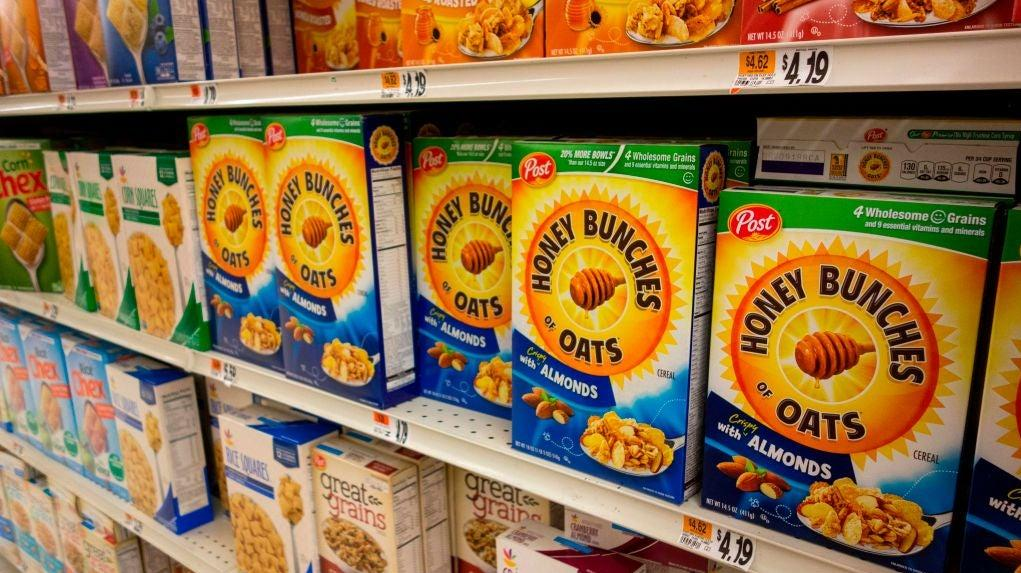What Is "Shrinkflation," And How Does It Shrink Our Cereal Boxes?
Manufacturers are subtly scaling down their products to deal with rising costs.
If it seems like your cereal boxes are shrinking slightly, you're not imagining things. Consumers really are paying the same price—or paying more—for smaller-sized pantry staples. It's a phenomenon known as "shrinkflation," and CNN Business reports that it's been a thing for decades.
CNN explains it thusly: when manufacturing costs—things like transportation and labor, for example—rise, manufacturers look for ways to cover their butts. That usually means one of two things: raising prices or whittling down the sizes of consumer goods. CNN's Nathaniel Meyersohn writes:
"Consumers are sensitive to price hikes, but they pay less attention to how much a product weighs. While product quantities are printed on labels, few people actually take the time to do the math to figure out exactly what they're paying per ounce. That means it's easier for a brand to sneak in a slightly smaller box on the shelf or take a few sheets out of a toilet paper roll than it is to raise prices without consumers reacting and perhaps switching brands or not buying the product."
CNN cited a few recent examples identified by Edgar Dworsky, a consumer advocate who tracks product downsizing on his website ConsumerWorld.org. One example is a family size box of Cocoa Puffs, which had reportedly dropped from 19.3 ounces to 18.1 ounces. Cinnamon Toast Crunch, meanwhile, had fallen from 19.3 ounces to 18.8 ounces. The smaller boxes were the same price as the larger boxes, despite losing roughly one bowl of cereal apiece.
CNN also cites Oregon creamery Tillamook, which recently announced that it was reducing its family size container of ice cream from 56 ounces to 48 ounces while keeping the price the same. "In order to be profitable and support our farmer owners, we had two choices: increase the unit price per carton or reduce the carton size from 56 ounces to 48 ounces and keep the price the same," the company said. "It was a difficult decision to make but we decided to choose the latter so that the affordable cost per carton of ice cream did not change for our fans."
That level of transparency actually seems ideal to me. I'll gladly support a brand that's open about rising costs; however, the sneaky cereal shrinking rubs me the wrong way. Time to start paying closer attention to my Special K, I suppose.
